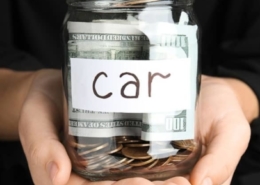How Do I Return a Leased Car and Avoid Unexpected Charges?
Find out how to return a leased car hassle-free and avoid hidden costs.
Returning a leased car to the dealership can seem complicated, especially if it’s your first time navigating the process. However, with a clear understanding of the steps, you can make the return smooth and hassle-free.
Whether you’re approaching the end of your lease term or simply ready to move on to a new vehicle, knowing how to return your leased car correctly is crucial to avoid unexpected fees and ensure a positive experience.
In this article, we’ll walk you through each step, from preparing your car for inspection to scheduling your turn-in appointment and reviewing your lease-end options.
Following these guidelines, you can confidently return your leased vehicle and move forward with your next automotive adventure.
Understanding Your Lease Agreement
First and foremost, it is important to carefully review your lease agreement to understand the terms and conditions of returning your leased car.
Every lease agreement is different, so it is crucial to know what is required of you regarding mileage limits, wear and tear, and any additional charges or fees that may apply.
If you have any questions or are unsure about your lease agreement, don’t hesitate to contact your leasing company for clarification.
When returning a leased car, you will typically have the option to return the vehicle to the dealership where you originally leased it or to a designated inspection center.
Some leasing companies may even offer the convenience of picking up the car from your home or workplace. Confirm the location and logistics for returning your leased car well in advance to avoid any last-minute stress or confusion.
- How to Buy a New Car Below Factory Invoice Price – True dealer cost and the factory invoice price are not the same… dealer cost can be much lower.
- Figure a Fair Profit New Car Offer – How to calculate a fair profit new car offer.
- How to Buy a New Car Online – Not sure where to start? Use my step-by-step guide on how to buy a new car online.
Checking for Excess Mileage and Wear and Tear
One key factor that can affect the return of your leased car is excess mileage and wear and tear. Most lease agreements come with a specified mileage limit; if you exceed this limit, you may be subject to additional charges.
Average Mileage Penalties in the U.S.
The average mileage penalty for a new car lease in the U.S. typically ranges from $0.15 to $0.25 per mile over the allotted limit, depending on the car’s value. For vehicles costing up to $30,000, the fee is generally around $0.15 per mile. For cars priced between $30,000 and $50,000, the fee is about $0.20 per mile. The penalty for more expensive or luxury vehicles can be $0.25 per mile or higher.
Understanding these fees can help you budget accordingly and avoid unexpected costs at the end of your lease. It’s always a good idea to monitor your mileage throughout the lease term and consider purchasing additional miles upfront if you expect to exceed the limit, as this can sometimes be a more cost-effective solution.
Excessive Wear and Tear
Any excessive wear and tear on the car beyond everyday use may also result in extra fees.
Before returning your leased car, assess its condition both inside and out. Look for any dents, scratches, or other damages that may need to be repaired before returning the car. Consider having the vehicle professionally cleaned to ensure it is in good condition for inspection.
Preparing for the Inspection
Before returning your leased car, it will undergo a thorough inspection by the dealership to assess its condition and identify any excess wear and tear or damages.
Preparing your vehicle for this inspection is essential to maximize your chances of a smooth return process.
Gather all necessary documents, including your lease agreement, maintenance records, and any receipts for repairs or maintenance that you have done on the car.
Make sure that all personal belongings are removed from the car before the inspection and that it is clean and free of clutter.
Financial Considerations
Returning a leased car may also have financial implications, so it is important to be aware of any charges or fees that you may incur during the return process.
These can include excess mileage fees, wear and tear charges, disposition fees, and any outstanding payments that may be due.
Understanding Excess Mileage Fees
Excess mileage fees are among the most common charges lessees may face when returning a leased car. If you have driven more miles than the limit specified in your lease agreement, you must pay a fee for each mile over the limit.
These fees can add up quickly, so you must know your mileage and plan accordingly.
To avoid excess mileage fees, consider reducing your driving or using alternative transportation methods in the months leading up to the return of your leased car.
You may also have the option to purchase additional miles at a discounted rate from your leasing company, which can be a cost-effective solution if you are close to exceeding the limit.
Dealing with Wear and Tear Charges
In addition to excess mileage fees, wear and tear charges can also impact the return of your leased car.
It is important to carefully inspect your car for any damages or excessive wear that may need to be repaired before returning the vehicle.
Minor dents, scratches, and stains are normal wear and tear, but significant damage may result in additional charges.
Consider having the car professionally inspected before returning it to identify any potential issues that need to be addressed.
You may also have the option to repair minor damages yourself or through a third-party vendor to avoid costly charges from the leasing company.
What Documents Will I Need?
Returning your leased car involves more than just handing over the keys. Having the proper documents in order ensures a smooth and hassle-free process.
Here’s a list of the essential documents you’ll need:
Lease Agreement: Outlines terms, conditions, mileage limits, and potential fees.
Vehicle Inspection Report: Details the car’s condition and any damages. (Dealer usually provides)
Maintenance Records: Include records of oil changes, tire rotations, and other services.
Repair Receipts: Proof of any repairs done to address wear and tear or damage.
Vehicle Registration: Current registration document proving the car is legally registered.
Insurance Information: This shows the car was insured throughout the lease term.
Owner’s Manual and Spare Keys: Return all original items, including the owner’s manual, spare keys, and accessories.
Final Odometer Reading: Record the final reading to check against the mileage limit.
Lease-End Options Form: Complete and submit if provided by your leasing company.
Personal Identification: Valid driver’s license or another form of ID.
(Having these documents ready will streamline the return process and help avoid potential issues or charges.)
Exploring Lease-End Options
As your lease term ends, you may have several options to consider. Understanding these options can help you make the best decision based on your needs and preferences.
1. Lease a New Vehicle
One option is to lease a new vehicle. Many leasing companies offer incentives for returning customers, such as lower rates or special promotions. This might be an attractive option if you enjoy the leasing experience and want to drive a new car every few years.
2. Purchase Your Leased Vehicle
Another option is to purchase the vehicle you have been leasing. Buying it can be a great choice if you have grown attached to your car and it meets your needs.
The lease agreement usually specifies the purchase price at the end of the lease term, which may be negotiable. (I personally don’t believe this is a good option. You will most likely pay a lot more than what the vehicle is worth)
3. Return the Vehicle
The third option is to return the car and walk away.
If neither leasing a new vehicle nor purchasing your current one appeals to you, you can return the car to the dealership.
Real-Time Bargain Hunting: Turn to Edmunds for instant access to the latest and greatest local deals, saving you time, money, and stress.
Returning Your Leased Car
Once you have reviewed your lease agreement, prepared your car for inspection, and addressed any financial considerations, it is time to return your leased car.
Follow these steps to ensure a smooth and successful return process:
- Schedule an appointment with the dealership or inspection center for the return of your leased car.
- Gather all necessary documents, including your lease agreement, keys, and any paperwork related to the car.
- Complete a final inspection of the car to ensure that it is clean and free of personal belongings.
- Turn in the car at the scheduled location and time, and obtain a receipt or confirmation of return.
- Confirm any outstanding payments or charges with the leasing company and settle any fees that may be due.
FAQs
What documents do I need to return a leased car?
You will need your lease agreement, maintenance records, repair receipts, and all keys and accessories initially provided with the car.
Can I return my leased car to any dealership?
Typically, you should return the car to the dealership where you leased it or a designated location specified by your leasing company. Check your lease agreement for details.
What happens if I exceed the mileage limit on my lease?
You will likely incur excess mileage fees, usually charged per mile over the limit specified in your lease agreement.
Can I repair damages myself before returning a leased car?
Yes, you can repair minor damages yourself or through a third-party vendor to avoid higher charges from the leasing company.
What should I do if I can‘t find some of the car’s original accessories?
Contact your leasing company to understand the implications and possible charges for missing accessories. It’s best to replace any missing items before the return.
Conclusion: How to Return an End-of-Lease Vehicle
Whether you are returning your leased car at the end of your lease term or considering early termination, it is essential to understand the steps involved in the return process.
By reviewing your lease agreement, preparing your car for inspection, and addressing any financial considerations, you can navigate the return of your leased car with confidence and ease.
Stay organized, communicate with your leasing company, and seek assistance to ensure a successful return experience.















